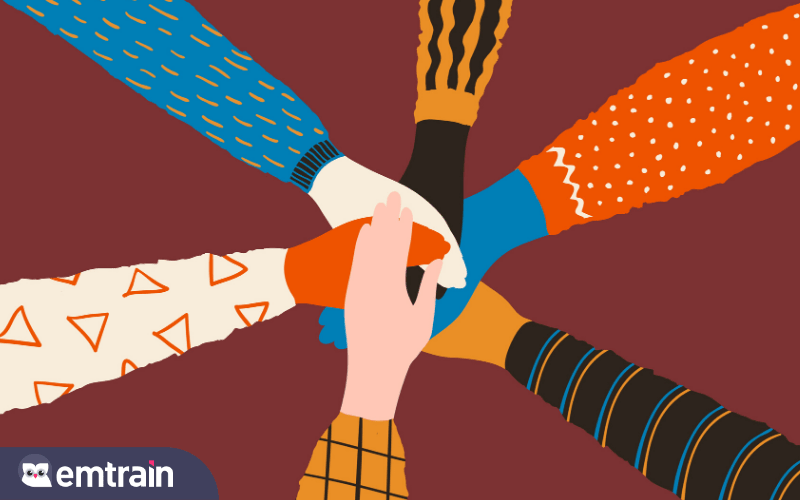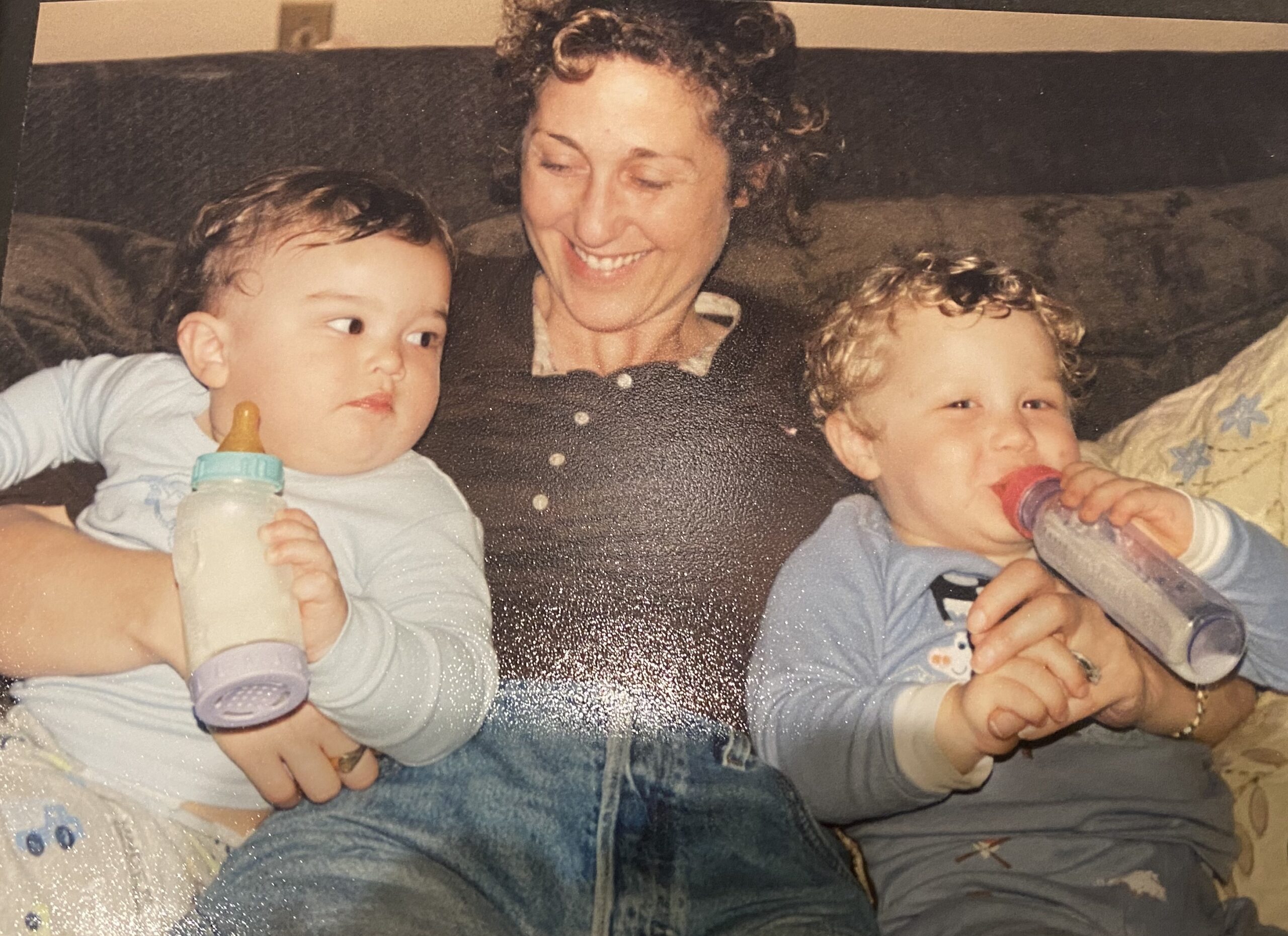We sat down with Nancy Douyon, design ethicist and product philosopher. Nancy has been a UI/UX designer (User Interface, User Experience) at Google, Uber, IBM, and Intel. She is an Emtrain Expert on Unconscious Bias. Nancy was interviewed in June 2020 by Laraine McKinnon, Emtrain’s Talent & Culture Strategist. This is a 4-part interview.
Laraine: Nancy, you talk about your opportunity to create tech for good. Tell us more.
Nancy: I really do want to create good. The exciting thing about working at tech companies is their power to touch everyone in the world.
I see tech as a tool to bring about good in this world, in the most scalable form. But that means it is extremely important if you’re in a position as I am, of privilege, and leading design, that you understand you have a responsibility. To appreciate that things can go haywire if you don’t consider a broad set of perspectives.
It’s important that we find a way to get people to hear a broad range of stories, see those stories and then take action with those stories. In my world, in user experience, that’s all I’ve done: get insights, and make them usable on the other end.
I think that’s why I’m so attracted to Emtrain. You share relevant stories about how our natural bias impacts the way people feel. Those stories are interactive as people share their own feelings and opinions. Those opinions inform the assumptions that influence the products we make. Education about bias or discrimination leads to inclusion and belonging that permeates everything we are around. It’s like putting a dye in some water and it just spreads out. If you can touch just one tech company out here, you’re impacting the entire world.
Laraine: Thanks for saying that! We know there’s much work to be done on diversifying talent in the tech industry and beyond. You’ve worked at some of the largest tech firms out there. What comes to mind when you think about diversity from a design standpoint?
Nancy: Well first of all, you can talk about increasing diversity, but if you don’t think about retention…you’re not really solving the whole problem. We’re whole people, whole beings. We need to listen to a broad range of people and consider what elements of design will truly enable our ultimate goal.
Here’s an example:
I was at a tech company that had an image issue. We decided to have a women’s listening session with our leader.
I had come to realize that our leader was completely unaware of some of the issues within the company. And people were mad—but I didn’t feel that it was right to be mad at the lack of awareness. And that’s why we did a listening session.
We’re in a room together and the first person addresses a recent issue. She says, “I just want to thank you because of the footage that was displayed at the All Hands Meeting. We noticed that you removed some discriminatory language that was coming out of the one of the mouths of the speakers, and I just think that’s a great example of your leadership.”
Our leader’s response was, “Oh, I know that guy. He’s not sexist.”
It was completely dismissive. I made a comment to him, saying “I think you should apologize because you completely dismissed the point.”
And he turned to me and said, “I don’t know why everything has to turn into racism and sexism.”
I was the only Black person in the room. I think there were two Asian people in the room. All others were white women. Thirty of us. No one had mentioned race or gender.
I didn’t know what to say, but I was thinking, ‘I don’t have time for this.’ Then the woman next to him starts crying. And she says, “You know what, this is exactly what I mean. I can’t tell you about this guy who follows me in the hallways and who rattles me at work, because the moment I tell anybody about him, people are gonna say “Oh, what Jimmy? He’s not sexist.”
And it dawned on our leader, in that moment, what we were saying—it just clicked for him. He looked at her and said, “I am so sorry.” He apologized to all of us and said, “There’s so much more I need to learn.”
I’m really interested in sparking awareness. That’s where we need to start. Just get a spark in someone’s mind that, ‘hey, maybe there’s another way. Maybe there’s a better way. Maybe this inclusion idea might not be so crazy. Maybe we should just try it. Let’s make it a goal for the year. Let’s not limit ourselves. If everybody put inclusive measures in every part of their practice, let’s see what happens.’
In the tech industry, I’ve been a Black chick amongst White, Indian and Asian men for a really, really, really, really long time. I’m constantly hearing about how great we are at diversity because we have international diversity and a couple women. It has become public relations: ‘at least we got one Black woman … Yay! We did it! We’re doing great!’ I am watching diversity goals literally go from a strong KPI (Key Performance Indicator) to a weak OKR (Objectives and Key Results). Essentially, diversity has been “let’s get one” instead of “I value diversity and we want more.”
One of the key differences between OKRs and KPIs is the intention behind the goal setting. KPI goals are typically obtainable and represent the output of a process or project already in place, while OKR goals are somewhat more ambitious. The reality is, crafting aggressive OKRs in diversity can push your team and yourself to perform that much better.
I want to get to the hearts of people, to help them understand why they need to make room for many more diverse people, and I try to figure out how to do that in the most effective way. That’s why I talk about the product so much. I’m in an industry where the launch is more important than the cause.
Laraine: So important. I also want to note that we’re talking at a time when we have acute awareness about racial justice because of the Black Lives Matter movement. How have you seen organizational leaders address it?
Nancy: I feel like people say they understand rather than actually understand. Like some of the comments that people have made to me about what’s been going on recently with police brutality. You can hear when someone truly understands what “Black Lives Matter” is about: addressing threats to black lives. Do you literally understand that MY life, Nancy Douyon’s life, is at risk, like right now! I am George Floyd. I am not a one-off situation despite all my accolades. Instead I hear, ‘you know, I’m just gonna say these words because I know I’m supposed to, but I don’t quite understand the problem.’
A white male engineering vice president at a major tech company, recently said to me, “you know, some [Black] women were telling me about how they’re afraid for their fathers, husbands and their sons, and while I can’t relate, I’m just so happy that my company has a space where they can talk about that.” This man was trying to hire me and all I could see was his lack of compassion because he wasn’t even willing to try to relate. What could that mean about working with him?
To me, I felt like he completely missed the point. And I wanted him to understand, because he is a person that I want to ‘get it.’ It is not just about creating a safe space to talk—it’s about creating an environment where Black men and women can succeed. Where biases are understood and mitigated.
I feel like we can sway some people, but how do we call attention to these issues in the most difficult, most intellectual minds? It’s an interesting problem that even the smartest companies in the world can’t seem to solve.
And I’ve got to stress this, because I don’t want to forget this: please be careful and mindful when reaching out to people of color to help build the solutions to your inclusion problems, if you haven’t taken the time to understand the problem yourself. I don’t know how to stress that enough. I’ve been hearing these stories all day every day.
A Black friend of mine was telling me his sister is pregnant and having a difficult time with COVID and the issues with police in this country. She’s a black woman married to a white man. Her white sister-in-law called her and said, “hey, can you please give me some advice on how to talk to my kids right now about everything that’s going on.” My friend’s sister was upset. She wondered why her sister-in-law didn’t even take the time to ask her how she was doing with all that was going on. Of course, her sister-in-law was not trying to cause any harm. But harm was done. In order to raise the next generation of compassionate, empathetic, enlightened kids, it starts at home! It’s on us, parents. If you are a parent looking for resources to help you raise and teach your kids to be anti-racist, you might not know where to start. But before we can teach our own children, we need to understand anti-racism ourselves—and then lead by example.
We can and have to do this.
I’m not saying that there’s any issue with asking for help or telling somebody you don’t get it. I think that’s wonderful that you are inquiring. Just make sure you check in to see how people are feeling first. And know that we can see when there is a lack of education almost instantly.
Black people are not begging for diversity just because we think it’s right. Almost all institutions have not allowed us here, here, here, here, here, here, and here. It’s everywhere, it’s institutionalized. We need to talk about marginalized communities where policing occurs, our backwards prison systems, inequity in healthcare, our bias hiring practices… We need to talk about it all.
I wish I had all the solutions but I don’t. What I have is a position of privilege. I show my difference in the products I influence by prioritizing inclusive design practices. There are so many people who are in positions of privilege, who have higher privileges than I do. It’s really important that they do something about this.
And this is why I say leverage your privilege*, whatever that may be. Look at what you have that other people don’t have and realize that you have within your capacity the ability to bring somebody into a space or to introduce something that will actually push us forward in equalizing. If you can help make this world become more inclusive, why not push that discomfort and do something?
Read Part 2 of Nancy’s interview to learn more about her background. Stay tuned for part 4 of our interview with Nancy Douyon.
Nancy Douyon is available for fireside chats on human centered design and workplace inclusion.
What is the definition of Leverage your Privilege?
Using your privilege and advantages to advocate for and speak up for those who do not have the same privilege or authority.








